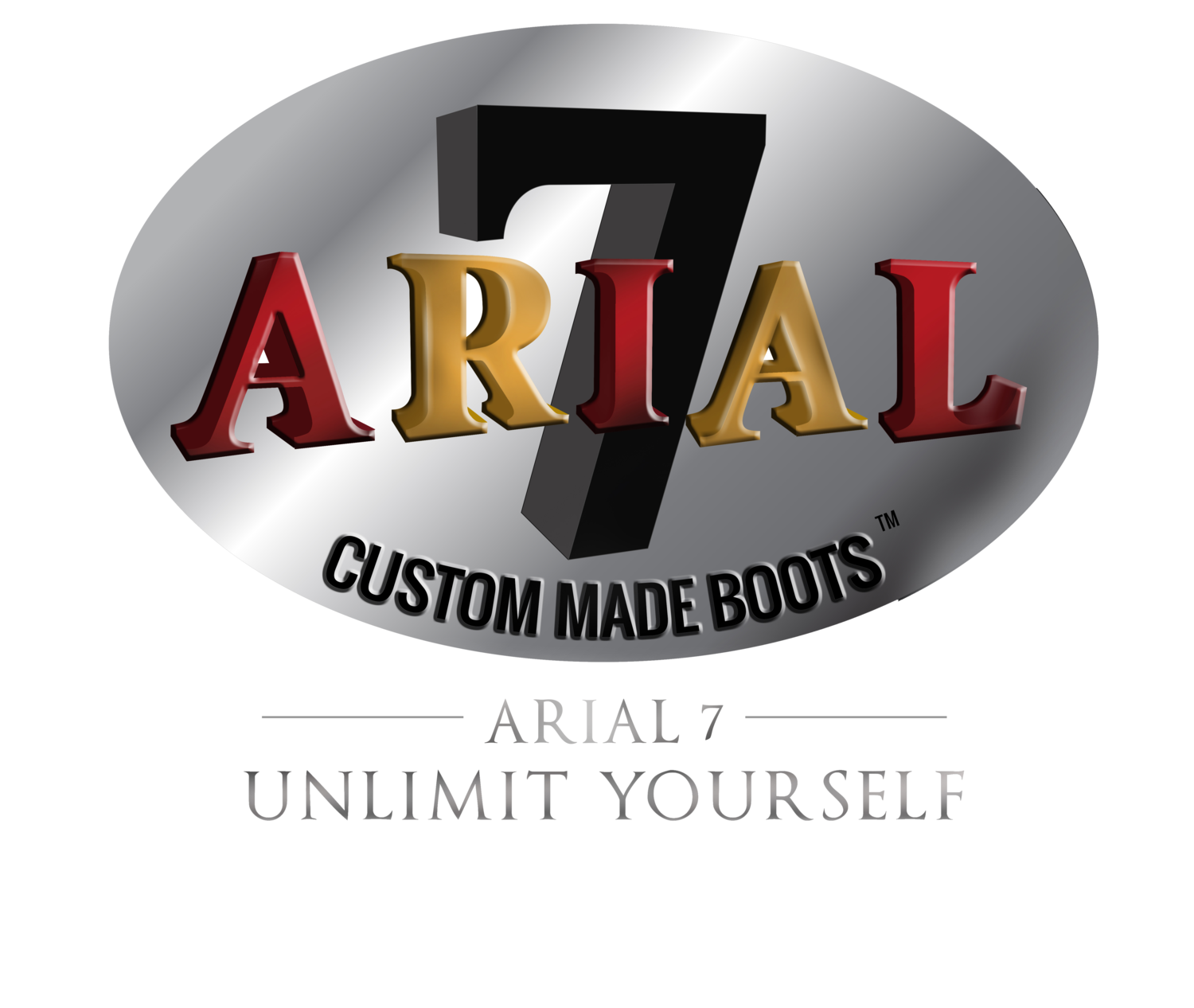First
Depending on the style you have chosen, we use as a basis for your order one of a number of different types of Lasts, these are the shaped blocks that we use for creating the shape of the end of the boot, they are either rounded or longer and finer, each is adapted to a particular style for our range, each foot size also has its own last, we then modify these to accommodate the measurements you supply, ie we widen them around the ball of the foot or build up the instep.
Pattern
The next step is the preparation and cutting of the card pattern that will allow us to make the leg of the boot. We start with a pre-prepared set of basic patterns for each foot size, from these we create the unique pattern for your particular measurements, from this we then make additional patterns for the lining leather and the uppers. Each pattern we make is then marked with the customer's name and then filed along with the full order details, this ensures complete traceability for a future order.
Leather
We only use the finest quality leathers for our riding boots, these are full grain and chrome tanned, and we source them from the best tanneries. All of our boots are hand cut using each customer’s unique pattern.
Closing
To make a boot is in essence to create a 3 dimensional object from several flat elements, the basis being a natural material, the leather. To stitch or "close" a boot requires no less than 24 or 25 different operations.
The various sections are assembled step by step, the simplest are carried out on a flat surface, the more difficult and complex are held and worked by hand. Even today no machine exists that can replace the human hand in these tasks, which is what makes the experience and dexterity of our highly skilled workers.
Sole
One of the most important aspects and considerations in the choice of a robust riding boot is the technique used to attach the sole. Being traditional bootmakers we offer all of our styles with a fully welted sole. This is achieved by means of the Blake Geneva method, ensuring that the leather together lining, and soles are stitched together. In the sequence of photographs, you can see the preparation of the uppers, followed by the positioning and stitching of the soles. The heel area is first located by means of 22 tacks, we then grind off the surface and locate the under sole, which depending on the choice of sole is either made from leather or a synthetic material. We hope you will appriciate from this brief description, that this technique is very different from that used in most off-the-shelf injected or purely solvent welted manufacture.
Assembling
After the linings and uppers have been stitched and bonded together the counters and puffs are added to the toes and heels, we then proceed with what is one of the most difficult and delicate operations in our process, the lasting or blocking is the assembling and stretching of the uppers on the foot last, this is carried out part by machine and finished by hand. We then machine off the excess leather and prepare to stitch the sole onto the boot. Prior to this we remove and sole together. The leather tongue is then glued. The sole is then pre-positioned and held in place by a strong adhesive, in the case of a leather sole we rout out a groove. We then stitch the uppers and sole together, the leather tongue is then glued down over the stitching and the sole sanded to a smooth finish. For a rubber or composite sole the procedure is slightly different, we stitch a spacer to the uppers and them press assemble the finishing sole to this.
Lasting
The outer edge of the soles are now finished, we mill them with a high speed (12000 rpm) cutter. The sole is then finely sanded and polished. On a leather sole, once the milling and sanding has been carried out we wax the base and edges. This is then brushed and buffed. If requested we can add a rubber sole protection prior to carrying out the finishing operation.
Finishing
The first stage in finishing is a complete cleanup of both the interior and exterior of the boot. We remove any traces of adhesive and tracing pencil and the cushioned leather in sole is then fitted into the foot bed. The boot is then placed on a machine that has a heated aluminum leg, this is articulated and can be expanded by means of a compressed air-ram. We carry out a full measurement check at this stage, for the pressure applied to the boot also corrects any folds in the lining. The boot is then removed to the polishing bench, and apply a high quality polish. This is then allowed to dry, then using a warm smoothing iron and tissue paper we iron the whole of the foot and leg of the boot. This opens the pores in the leather and helps the polish to penetrate but the final finishing, is the classic "spit and polish" technique. For crust leather we use a different system, waxing and polishing the leather to a sheen finish.
Call today to have your sitting to create your personalized boot and unlimit yourself.
